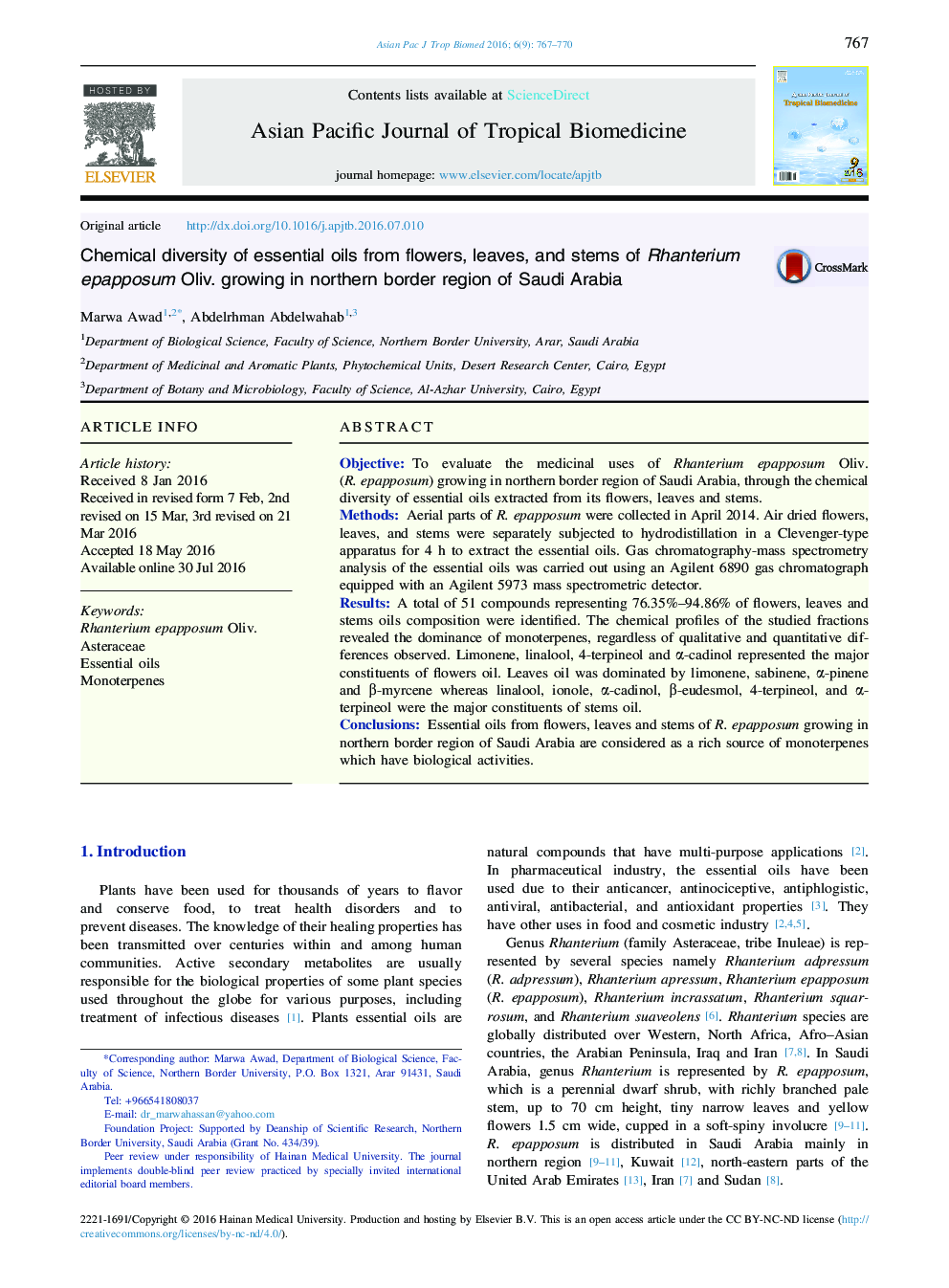| Article ID | Journal | Published Year | Pages | File Type |
|---|---|---|---|---|
| 2032275 | Asian Pacific Journal of Tropical Biomedicine | 2016 | 4 Pages |
ObjectiveTo evaluate the medicinal uses of Rhanterium epapposum Oliv. (R. epapposum) growing in northern border region of Saudi Arabia, through the chemical diversity of essential oils extracted from its flowers, leaves and stems.MethodsAerial parts of R. epapposum were collected in April 2014. Air dried flowers, leaves, and stems were separately subjected to hydrodistillation in a Clevenger-type apparatus for 4 h to extract the essential oils. Gas chromatography-mass spectrometry analysis of the essential oils was carried out using an Agilent 6890 gas chromatograph equipped with an Agilent 5973 mass spectrometric detector.ResultsA total of 51 compounds representing 76.35%–94.86% of flowers, leaves and stems oils composition were identified. The chemical profiles of the studied fractions revealed the dominance of monoterpenes, regardless of qualitative and quantitative differences observed. Limonene, linalool, 4-terpineol and α-cadinol represented the major constituents of flowers oil. Leaves oil was dominated by limonene, sabinene, α-pinene and β-myrcene whereas linalool, ionole, α-cadinol, β-eudesmol, 4-terpineol, and α-terpineol were the major constituents of stems oil.ConclusionsEssential oils from flowers, leaves and stems of R. epapposum growing in northern border region of Saudi Arabia are considered as a rich source of monoterpenes which have biological activities.
